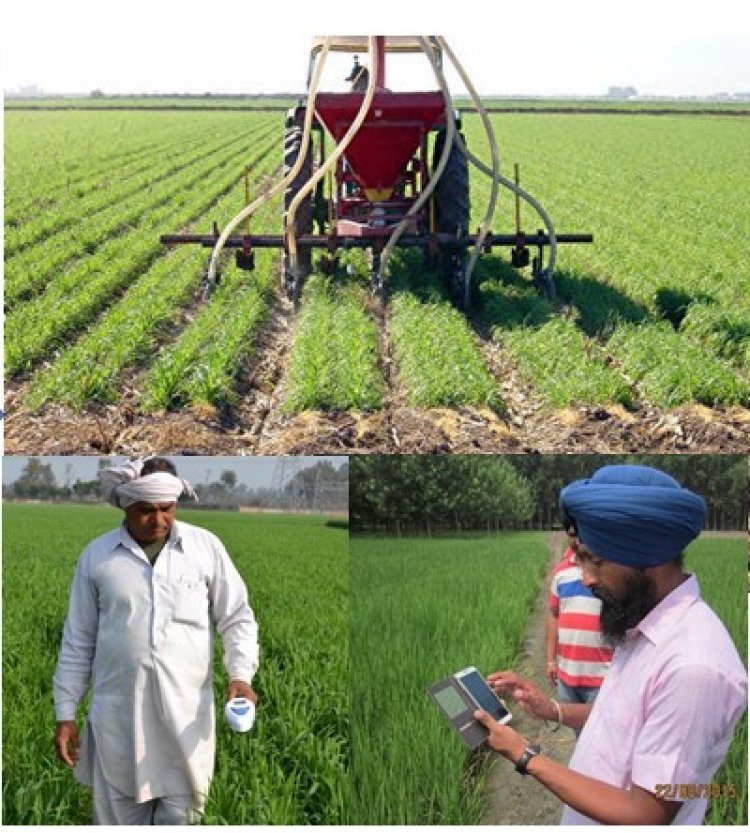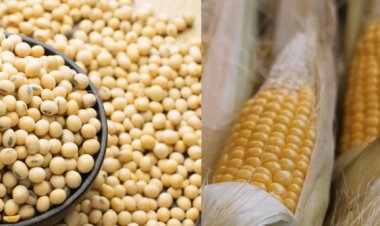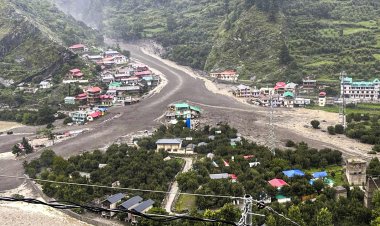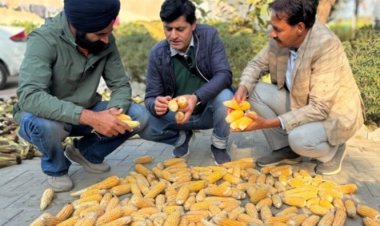The “slow magic” of agricultural research must accelerate
The Prime Minister has envisioned making India a USD 5-trillion economy by 2024-25. The agriculture sector should aim to contribute at least USD 1 trillion. Technologies arising from enhanced investments in agriculture research will have the potential for providing the needed momentum. The “slow magic” character of agricultural research needs to accelerate.

India’s agriculture with estimates of a record rabi production has brought cheer despite the current pandemic-driven downturn scenario. Surely, the farm sector merits more support than what is budgeted for the Ministry of Agriculture and Farmers Welfare, considering also that the significance of healthy food and a balanced diet for immunity is better recognised today. The allocation for 2021-22 at Rs 1,31,531 crore is less than that for the previous year at Rs 1,42,763 crore, subsequently revised downwards to Rs 1,24,820 crore. In fact, agriculture research and education, the bedrock of modern agriculture development, has been allocated Rs 8,514 crore, scarcely higher than the previous year (Rs 8,363 crore), of which most (85%) is spent on establishment, with little left for research.
“Slow magic” is how research and development (R&D) in agriculture is defined since the returns to public investment are 10 to 15 times higher – much more compared to other sectors, be those on input subsidies, infrastructure development, including roads or education. The science-led green revolution in the mid-1960s not only made India self-sufficient in food production, from basket case to breadbasket, but boosted its much-needed confidence and national pride. Scientific innovations in agriculture brought about the white, blue and rainbow revolutions in livestock, fisheries and horticulture sectors respectively.
Despite these admirable achievements, public investment in agriculture research, for more than two decades, has not been commensurate. Successive reviews of the Indian Council of Agriculture Research (ICAR) have highlighted the need to raise research spending. The Gajendragadkar Committee (1972), GVK Rao Committee (1988), RA Mashelkar Committee (2001), MS Swaminathan Committee (2006) and T Ramasami Committee (2017), all recommended a minimum of 1% of agricultural GDP for agricultural R&D. India falls far short with an allocation of only 0.39%. This is ten times less than in countries like the USA, Australia, Japan and almost half that in China. Other comparable economies like Brazil, Mexico, and Malaysia spend around 1.80%, 1.05%, and 0.99 % respectively.
While the importance of securing our national borders is recognised, the importance of farmers’ contribution to fighting against hunger and poverty, the most foundational of sustainable development goals (SDGs), cannot be undermined. The slogan of Jai Jawan, Jai Kisan, Jai Vigyan reiterates the need to bolster support for agricultural science and technology if the country has to remain globally competitive while achieving the goal of Atmanirbhar Bharat. Farmer welfare or kisan kalyan has to be crafted through the ‘farmer first’ approach backed by appropriate policies, incentives, institutions and up-scaling innovations as highlighted in the Paroda Committee report (2019) submitted to the government. The multi-dimensionality of doubling farmers’ income necessitates transforming agriculture from a 20th-century production-centric to a 21st-century holistic agri-food system. Research reorientation now demands greater thrust on innovation to bridge knowledge and technology gaps so critical for robust value chains aiming at a ‘plough to plate’ continuum.
Today, the emerging challenges before Indian agriculture are more daunting. We need an inclusive ‘Evergreen Revolution’. Not too long after its spread in the north-western plains, recognition had dawned that green revolution technologies had been selective in impact. The rainfed areas, resource-poor farmers and landless labourers were bypassed. Research priorities needed reorientation towards greening the grey (rainfed) areas. Today, to double the income of resource-poor farmers, technologies are required that save cost on inputs and build resilience in farming. Watershed management, agro-forestry, silvi-pasture systems, farming around secondary and speciality agriculture etc. have gained in importance. Horticulture, pulses, oilseeds, spices, medicinal plants, fodder crops, dairying, animal husbandry, inland aquaculture and activities like bee-keeping, mushroom cultivation, vermi-composting, poultry, piggery etc. are receiving priority from researchers.
In order to counter the adverse environmental effects of the second-generation problems of the green revolution such as land degradation, diminishing soil fertility, receding groundwater tables, factor productivity decline and biodiversity loss, a paradigm shift is needed towards sustainable agriculture through conservation agriculture, organic farming, micro-irrigation, and nutrient use efficiency. ‘More crop per drop’ has become the new mantra. Resource-conserving and climate-smart technologies such as zero-tillage, drip irrigation, crop varieties resistant to drought, flood, heat, cold and insect-pests, are commanding greater attention from scientists. Integrated pest and nutrient management, organic matter recycling, use of biofertilizers and biopesticides now occupy centre-stage. Innovations have to be scaled up urgently around hybrid technology, biotechnology (GM crops and use of genome editing), protected cultivation, precision farming, bio-energy, crop biofortification, remote sensing, information and communication technology, etc. Drones, sensors, artificial intelligence and Internet of Things (IoT) have the potential to improve efficiencies in agri-food production, post-production management and agro-processing.
The trajectory of public expenditure on agricultural research has stagnated for decades, hovering between 0.3% and 0.4% of agriculture GDP. This tepid, business-as-usual approach is unlikely to provide the quantum jump in productivity and efficiency in our production systems. Expected private investment has also not increased due to a lack of enabling policies, including those linked to scaling of innovations, public-private partnership and IPR protection. Moreover, the private sector investments can at best be complementary, and not a substitute. No doubt, the recent farm laws do offer an opportunity to better link farmers to markets and increase private investment in the sector. However, they need to find wider acceptability with the stakeholders through dialogue and understanding.
The Prime Minister has envisioned making India a USD 5-trillion economy by 2024-25. The agriculture sector should aim to contribute at least USD 1 trillion. Technologies arising from enhanced investments in agriculture research will have the potential for providing the needed momentum. The “slow magic” character of agricultural research needs to accelerate.
(Dr RS Paroda is former Director-General of the Indian Council of Agriculture Research (ICAR) and Secretary, Department of Agriculture Research and Education (DARE).
Rita Sharma is former Secretary, Ministry of Rural Development, Govt of India and Principal Secretary, Agriculture, Govt of Uttar Pradesh.)




 Join the RuralVoice whatsapp group
Join the RuralVoice whatsapp group









































